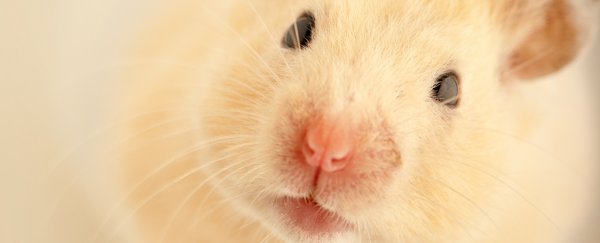It's not just human beings who are heading into space to explore the Universe beyond Earth: a group of mousetronauts are preparing to make their way into orbit, and will be journeying to the International Space Station (ISS) tomorrow, with the backing of NASA.
In this particular experiment, named Rodent Research-3, scientists are hoping to test ways to "prevent skeletal muscle atrophy and weakness in mice" - in other words, figure out how to stop the loss of bone and muscle tissues that typically occurs during extended stays in space. If we're ever going to make it to Mars, we need to learn methods for ensuring we're in good shape when we get there.
As Motherboard reports, this isn't the first time that rodents have been blasted into space in the interests of scientific research, but housing this latest batch of creatures on the ISS should enable researchers to carry out much longer experiments.
The biological similarities between mice and humans make them ideal specimens for study, and their shorter lifespans (two years on average) mean experiments can be carried out in a shorter space of time. By studying the effects of space travel on the mice, we should learn more about how muscle size and function are affected by a low-gravity environment.
Of course, the same drugs and treatments that would be used on the ISS could also be used here on Earth to treat muscle diseases, so the benefits of the study won't just be felt out in space. The astronauts currently living on board the ISS can house the mice for 30 to 90 days, and the animals will be travelling on the SpaceX resupply rocket, due to take off on April 8.
Once on board, half of the intrepid mousetronauts will be injected with a myostatin inhibitor, which is thought to slow down the rate of muscle generation, while the other half will be left alone as a control group.
The same experiment will be carried out on the ground to compare results between the two groups, and scientists will keep watch on the mice in orbit using a live video feed.
"Muscle wasting is seen in diseases such as muscular dystrophy, ALS, cancer cachexia, and even musculoskeletal frailty associated with ageing," principal investigator, Rosamund Smith, told Motherboard. "We're hoping the experiment results will give us scientific insight into how better to treat patients who are suffering from muscle atrophy."
The mice mission is a bold one but a short one: once the experiments are over, the animals will be dissected and returned to Earth, where the effects of the drug can be studied further. Just don't tell the mice that…
